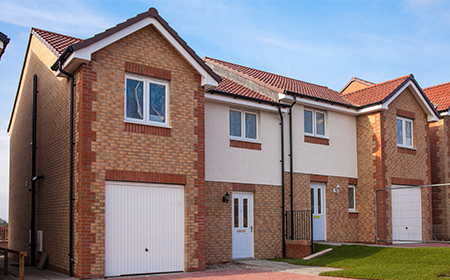On this page
When do you have to pay Stamp Duty on a second home?
Stamp Duty rules are different for those buying a second home.
If you already own one property and you're buying another, the Stamp Duty threshold is lower. If the second property is worth more than £40,000, you’ll have to pay Stamp Duty for second homes.
You’ll also pay a higher percentage of Stamp Duty when you’re buying an additional property. This is known as the Stamp Duty surcharge. In England, Wales and Northern Ireland, this is set at a minimum of 5%. Whereas in Scotland its a minimum of 8%.

What counts as a second home?
The term ‘second home’ can seem vague. So, it’s important to clarify what exactly qualifies as a second home. Essentially, a second home is any property you purchase beyond the one you already own. This could be a:
- Buy to let property.
- Holiday home.
- Property bought as a family gift.
England and Northern Ireland
On second properties with a purchase price between £40,000 and £125,000, you pay 5% Stamp Duty.
Then:
- Between £125,001 and £250,000, you pay 7%
- Between £250,001 and £925,000, you pay 10%.
- Between £925,001 and £1.5m, you pay 15%.
- Over £1.5m, you pay 17%.
Scotland
On second properties with a purchase price of up to £145,000, you pay 8% Stamp Duty (called LBTT).
Then:
- Between £145,001 and £250,000, you pay 10%.
- Between £250,001 and £325,000, you pay 13%.
- Between £325,001 and £750,000, you pay 18%.
- Over £750,000, you pay 20%.
Wales
On second properties in Wales with a purchase price of up to £180,000, you pay 5% Stamp Duty (called LTT).
Then:
- Between £180,001 and £250,000, you pay 8.5%.
- Between £250,001 and £400,000, you pay 10%.
- Between £400,001 and £750,000, you pay 12.5%.
- Between £750,001 and £1.5m, you pay 15%.
- Over £1.5m, you pay 17%.

Can I claim back second home Stamp Duty?
You pay a higher rate of Stamp Duty when buying a second home. But you can claim this back in some circumstances. In England and Northern Ireland, you can apply for a refund for the additional 3% you paid in Stamp Duty if you’ve sold what was previously your main home.
The main example of when this might happen is when you’re moving house and you buy your new home before selling your old one. Technically, you own two properties. The original home is seen as your main residence. The new home is therefore an additional property, and subject to the higher rate of Stamp Duty as a result.
When you sell your original home, the new property then becomes your main home. After this, it is no longer subject to the higher rate of Stamp Duty. You may be able to claim this back as a refund, provided you do so within three years.
The rules differ depending on whether your property was sold before or after 28th October 2018.
How to claim back Stamp Duty
To claim back the additional Stamp Duty when a second home becomes your main residence, you need to:
-
01
Gather the paperwork
You’ll need your details, the details of the property you’re claiming back for, and information on the property that was previously your main residence. You’ll also need details of the tax you paid on the property and what you’re trying to claim back.
-
02
Create a Government Gateway ID
To claim for the repayment, you’ll need to complete an online form at GOV.UK. To do this, you’ll have to create a Government Gateway user ID.
-
03
Apply online
With your paperwork gathered, you can use your Gateway ID to log in to GOV.UK and complete the SDLT (Stamp Duty Land Tax) repayment form. Or you can complete the form on-screen, print it and send it to HM Revenue and Customs via post.
